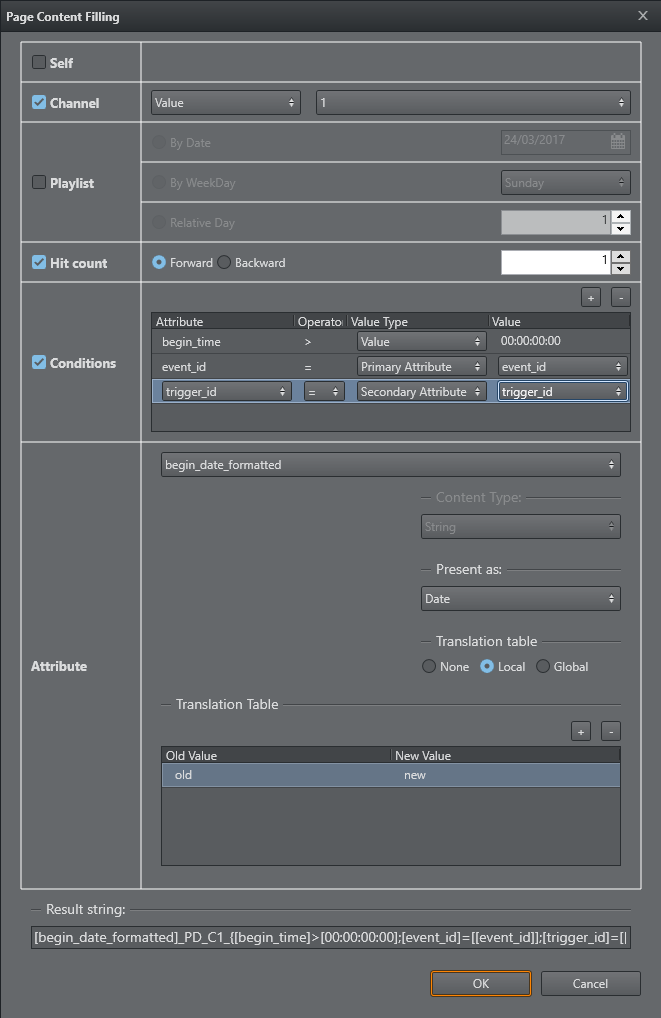
Viz Multichannel
Version 4.1 | Published May 27, 2019 ©
Dialog Menu and Explanations of Options
This section provides guidelines and sample values, when working with the Page Content Filling dialog menu.

-
Self: Gets information from the primary event the page resides under. This will disable the Channel, Playlist, Item and Conditions options.
-
Channel: Allows you to select the relevant channel if you want to populate your pages with primary event content from another channel. Can have one of 3 values.
-
Value: Select the relevant channel from the list. Channels are configured in Promo Server configuration (see Promo Server Installation and Configuration)
-
Primary Attribute: Channel name derived from the specific attribute value of primary event.
-
Secondary Attribute: Channel name derived from the specific attribute value of page itself.
-
-
Playlist: Allows you to select another playlist than the current. If you are working on the current playlist do not select this option. For selecting other playlists than the current, your options are:
-
By Date: Reads from the playlist of the date selected.
-
ByWeek Day: Reads from the next day selected.
-
By Relative Day: Reads from the playlist as many days in the future as selected. Select 1 for the following day, 2 for two days after the current date’s playlist, etc.
-
-
Hit count: Allows you to select an item from another playlist than the current. If you are working on the current playlist do not select this option.
Note: The old behavior of selecting an item by time or relative to a current event has been replaced by the Hit count option. Unlike the Item option, Hit count does not allow for negative (i.e. relative).
Also, setting the time is now mandatory. -
Conditions: Looks for the first primary event that meets the conditions in the table. Any entry prefixed with secondary_ indicates it is to check data from the page (itself) and not the parent (primary element). This allows you to use secondary data (e.g. secondary_begin_time) to find relevant primary event data, giving more dynamic conditions.

-
Value Type which has 3 options:
Value: Compares attribute value with the condition value.
Primary Attribute: Compare attribute value with the specific attribute value of primary event.
Secondary Attribute: Compare attribute value with the specific attribute value of page itself.
-
-
Attribute: Allows you to select an attribute from a located primary event or the current secondary event. The fields available in the list depends on what is defined in the Mapping Table under General Settings. Translation tables can be used to define arbitrary value-translations, via a value=value-table. There are two translations tables:
-
TranslationTable: settings per page.
-
GlobalTranslationTable: As the name implies, a Global Translation Table. Can be configured in Channel Settings under Import/Export Settings > General Settings > Translation Tables.
-
-
Result string: Displays the resulting string based on your configuration of the respective fields. It can be edited.
See Also: Page Content Filling Aliases